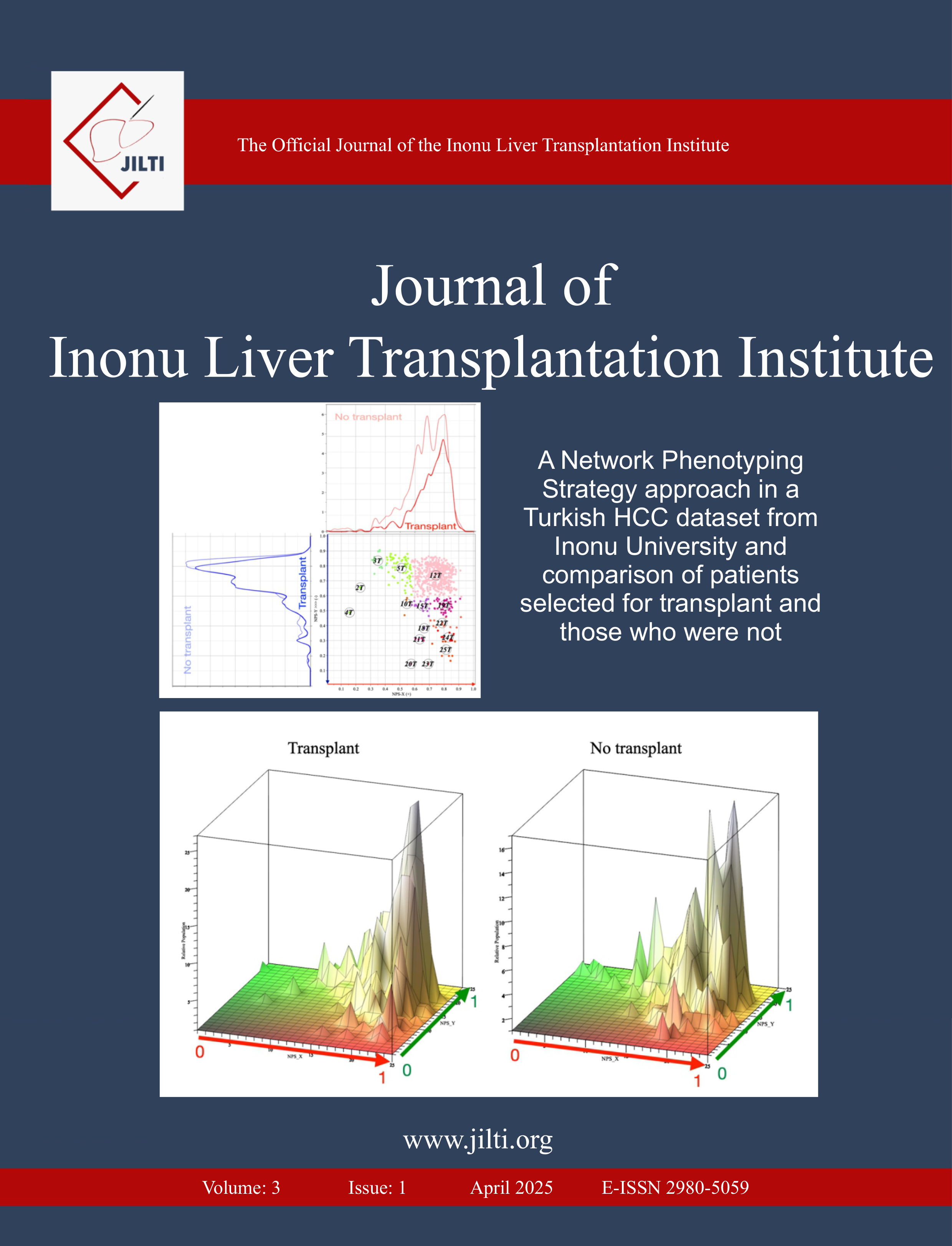A Network Phenotyping Strategy approach in a Turkish HCC Dataset and Comparison of Patients Selected for Transplant and those who were not
Petr Pancoska1, Brian Irving Carr2, Volkan Ince2, Sezai Yilmaz21Institute of Theoretical Informatics, Charles University, Prague, Czech Republic and University of Pittsburgh, Pittsburgh, PA, USA2Liver Transplant Institute, Inonu University, Malatya, Türkiye
Objectives: A Network Phenotyping Strategy (NPS) was recently created to stage hepatocellular carcinoma (HCC) from an Italian dataset into 25 discrete phenotypes sT, s=1→τ1, …, s=25→τ25 ordered (τ1<τ2,…,<τ25 ) according to the dynamics of the HCC progression from its onset.
Methods: To use NPS methodology on an ethnically different, Turkish HCC cohort that had, in addition, been stratified according to patients selected for liver transplantation or not.
Results: The Turkish patients had only a smaller subset of 16 out of the 25 HCC phenotypes of the Italian patients. HCC progression through phenotypes, which are exclusive to the Italian population, is a dominantly tumor biology-driven process, occurring within a constant extent of liver microenvironment damage. In contrast, in phenotypes shared by the minority of Italian patients and the majority of Turkish patients, the HCC progresses by a more complex disease burden generating mechanism, consisting of simultaneous tumor biology-driven damage, accompanied by advancing liver microenvironmental impairment.
NPS objective stratification of a “real world clinical practice” patient cohort into subpopulations with identical HCC clinical phases enabled the simulation of clinician-dependent selection for liver transplantation or not in this cohort, using specific baseline variables. A clearer understanding of HCC biology has allowed us to identify differing biological phenotypes. The predominant 12T phenotype was examined in detail and combined with surgical knowledge obtained retrospectively as to the difference between transplanted and non-transplanted patients to then derive models that may be useful for biology-dependent surgical decision support in future patients.
Conclusion: Only a subset of all HCC phenotypes appeared in the Turkish cohort and may be explained by the non-screened patients having HCC as a secondary problem, and is primarily driven by the liver microenvironment, in contrast to Italy, where HCC develops (predominantly) in healthier livers.
Manuscript Language: English



